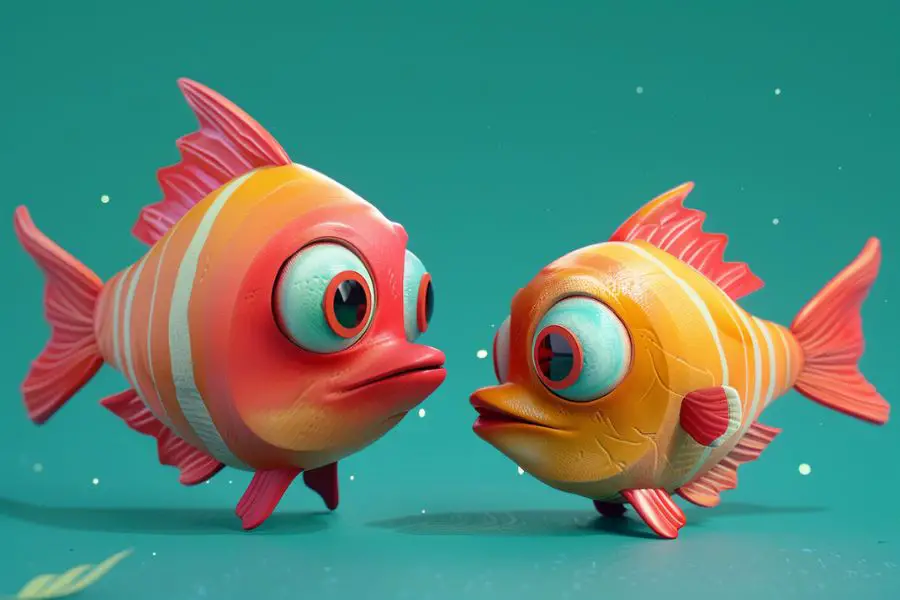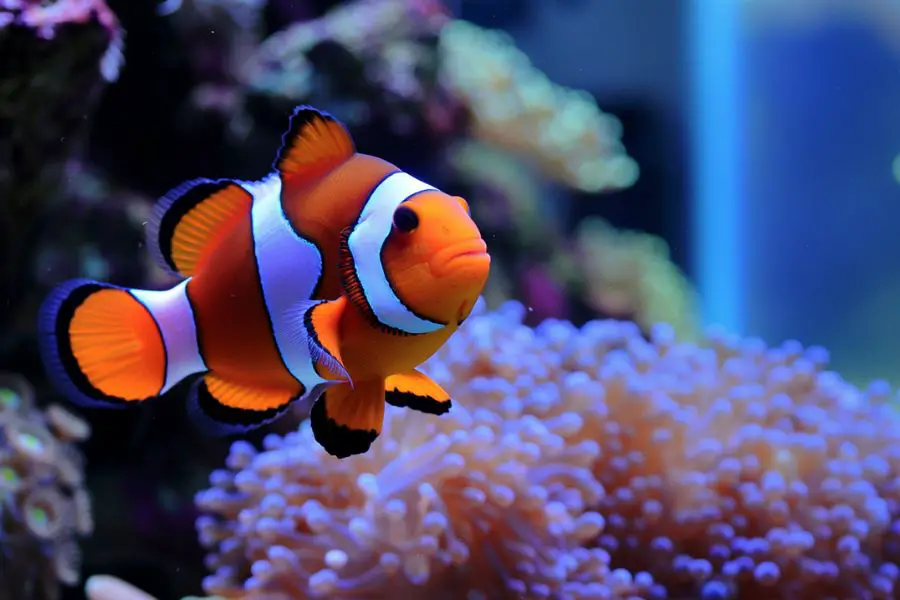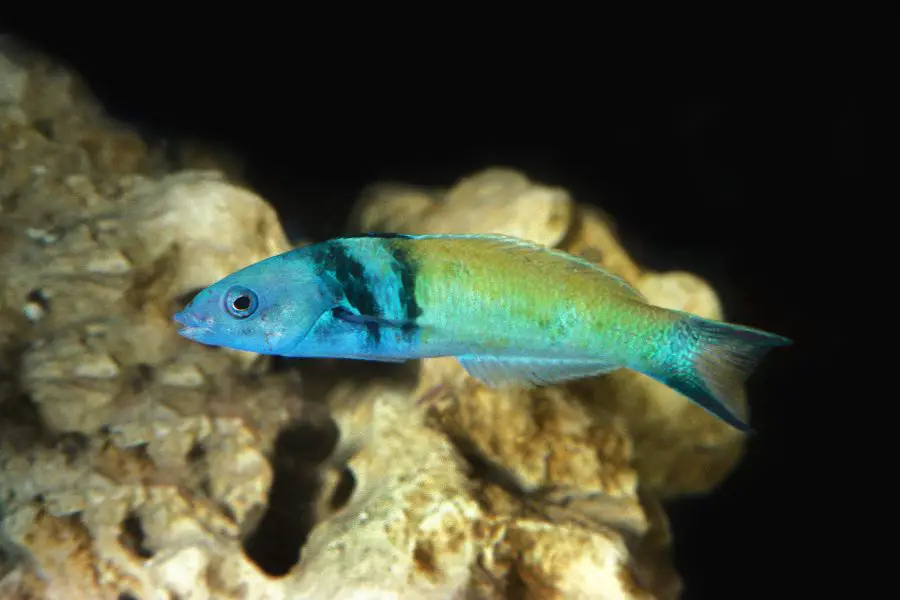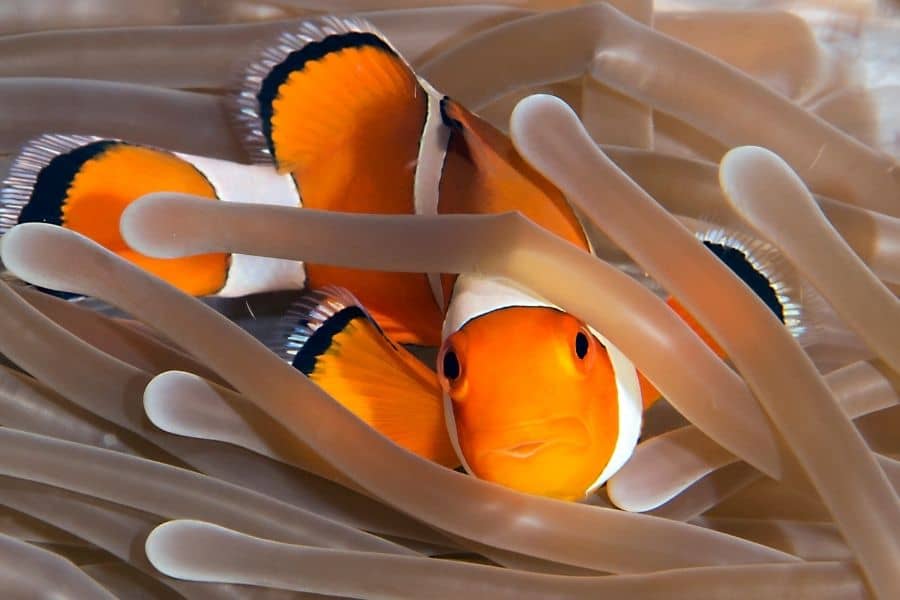Hey there! Let’s talk about something cool: Fish That Changes Gender or sequential hermaphroditism.

It’s when certain fish can switch their gender during their lives. Imagine that! Fish like clownfish and bluehead wrasse are examples of this fascinating ability.
Understanding why fish change gender is super important for figuring out how fish communities work. It helps us see how they grow, interact, and make babies!
By studying this, we learn a lot about how fish adapt to their surroundings. Plus, it helps us protect their homes and keep oceans healthy. So, let’s dive in and explore the amazing world of fish that change gender!
Understanding Sequential Hermaphroditism
Jump To
A. Explanation of sequential hermaphroditism
Okay, let’s break down what sequential hermaphroditism is all about. Imagine you’re a fish, and sometimes you feel like changing your gender. That’s what happens with sequential hermaphroditism!
Sequential hermaphroditism is like a fish’s superpower. It’s when a fish starts out as one gender and then switches to another during its lifetime. So, if I’m a male fish today, I might become a female fish tomorrow. It’s pretty amazing how fish can do that, right?
B. Types of sequential hermaphroditism:
- Protandry (male-to-female transition): Picture this: I’m a male fish hanging out in the ocean. As I get older and bigger, I might decide to become a female fish. That’s protandry for you!
- Protogyny (female-to-male transition): Now, imagine I’m a female fish swimming around. If the situation in my fishy community changes and there’s a need for more males, I might transform into a male fish. That’s protogyny in action!
C. Examples of fish species exhibiting each type
Let me introduce you Fish That Changes Gender:
- Protandry examples: Ever heard of clownfish? Yeah, those little guys are famous for protandry. When the dominant female in their group disappears, the largest male switches genders and becomes the new queen fish!
- Protogyny examples: Now, let’s talk about bluehead wrasse. These fish start off as females. But if the big male fish leaves, the largest female can turn into a male and take charge!

See? Fish are pretty awesome creatures, and sequential hermaphroditism is just one of the many cool things they can do!
Factors Influencing Gender Change in Fish
Gender change in fish is like a complex puzzle, influenced by both the environment and the fish’s own body. Let me break it down for you:
A. Environmental Factors:
- Social Structure: Imagine you’re a fish in a bustling underwater city. How you interact with others, your position in the group, and who you hang out with can affect whether you change gender. It’s like living in a big fish family!
- Population Density: Picture a crowded fish neighborhood. When there are lots of fish around, competition for resources like food and space gets intense. This can push some fish to switch genders to keep the peace.
- Food Availability: Fish need to eat, right? If food is scarce, it can stress out the fish population. In response, some fish may change gender to increase their chances of survival and reproduction.
B. Physiological Factors:
- Hormonal Regulation: Inside a fish’s body, hormones act like messengers, telling it when to grow, reproduce, and even change gender! Hormone levels can be influenced by things like temperature, light, and even the presence of other fish.
- Age and Size: Just like humans, fish grow and change as they get older. Age and size can play a big role in whether a fish decides to switch genders. Sometimes, older and bigger fish have different needs when it comes to reproduction.
- Health Status: If a fish isn’t feeling well, it might not be in the best condition to reproduce. Health issues can affect hormone levels and overall reproductive fitness, influencing whether a fish changes gender or not.
Examples of Fish That Change Gender
Let me introduce you to two fascinating examples of fish that can change their gender:
A. Clownfish (Amphiprioninae):
- Protandrous Hermaphroditism in Clownfish Colonies: Imagine a vibrant coral reef bustling with life, including colorful clownfish. These little guys live in groups with a strict social hierarchy. The largest fish in the group is the female, while the next largest is the dominant male. Here’s the cool part: if the female clownfish disappears, the dominant male steps up and becomes a female! It’s like a backup plan to keep the group going strong.
- Social Hierarchy and Reproductive Roles: In clownfish colonies, everyone has a job. The dominant female lays the eggs, while the dominant male protects them. Meanwhile, the other fish in the group help with feeding and defending their home. It’s a team effort that keeps the colony thriving!
B. Bluehead Wrasse (Thalassoma bifasciatum):
- Protogynous Hermaphroditism in Bluehead Wrasse Populations: Meet the bluehead wrasse, a colorful fish found in coral reefs. In these wrasse communities, there’s a single dominant male surrounded by a group of females. But here’s where it gets interesting: if the dominant male disappears, the largest female in the group undergoes a gender transformation and becomes the new male leader! It’s like a real-life superhero origin story.
- Behavioral Cues Triggering Gender Change: The decision to change gender isn’t random. It’s influenced by behavioral cues and environmental factors. When the dominant male vanishes, the largest female detects changes in social dynamics and hormones, triggering her transformation into a male. It’s nature’s way of ensuring the survival of the group.

These examples show us just how fascinating and adaptive the world of fish can be. By changing gender, these fish ensure the continuation of their species and maintain balance within their communities. Nature truly is full of surprises, isn’t it?
Ecological Significance of Gender Change in Fish
Gender change in fish isn’t just a neat trick—it plays a vital role in maintaining healthy ecosystems. Here’s why it matters:
A. Maintaining Reproductive Success:
Imagine you’re a fish living in a dynamic ocean environment. Changing gender allows fish populations to adapt to fluctuations in reproductive opportunities.
If there aren’t enough mates of one gender, some fish can switch to the other to ensure successful breeding and the survival of their species. It’s like having a backup plan for making baby fish!
B. Adaptation to Environmental Changes:
Our oceans are constantly changing, from shifts in temperature to alterations in habitat structure. Fish that can change gender have a unique advantage.
They can adjust to these environmental changes more effectively. By adapting their reproductive strategies, they increase their chances of survival and passing on their genes to the next generation. It’s a clever way for fish to keep up with the times!
C. Impact on Population Dynamics and Ecosystem Stability:
Picture a bustling coral reef teeming with life. Fish populations with individuals capable of changing gender contribute to the diversity and stability of these ecosystems.
By maintaining balanced sex ratios and ensuring efficient reproduction, they help keep populations in check and prevent overgrowth of certain species.
This, in turn, maintains the delicate balance of predator-prey relationships and ensures the overall health of the ecosystem. It’s like each fish has a role to play in the underwater community!
VI. Human Impacts and Conservation Considerations
We humans have a big impact on the world around us, including the lives of fish that change gender. Here’s how:
A. Overfishing and Disruption of Natural Sex Ratios:
Imagine you’re a fisherman casting your net into the ocean. Sometimes, we catch too many fish, throwing off the balance of natural sex ratios in fish populations.
When we remove too many of one gender, it can disrupt the ability of fish to reproduce and maintain healthy populations. It’s like trying to build a puzzle with missing pieces!
B. Habitat Destruction and Loss of Breeding Grounds:
As we expand and develop, we often destroy the habitats where fish live and breed. Coral reefs, mangroves, and estuaries are essential breeding grounds for many fish species.
When we damage or destroy these habitats through pollution, coastal development, or climate change, we rob fish of their homes and safe places to reproduce. It’s like taking away a bird’s nest—it’s tough for them to raise their families without it!
C. Conservation Efforts to Protect Fish Fish That Changes Gender:
But it’s not all bad news! There are things we can do to help protect fish with sequential hermaphroditism.
By creating marine protected areas, enforcing fishing regulations, and promoting sustainable fishing practices, we can give fish populations a fighting chance.
Education and awareness are also key—by learning about the importance of these fish and their habitats, we can inspire others to join in the effort to protect them. Together, we can make a difference!
By working together to address these challenges and protect fish with sequential hermaphroditism, we can ensure that these fascinating creatures continue to thrive in our oceans for generations to come.
It’s up to us to be good stewards of the sea and protect the amazing diversity of life that calls it home!

Conclusion
Fish That Changes Gender is a fascinating aspect of fish biology, showcasing their adaptability and resilience.
Understanding this phenomenon is crucial for conserving marine ecosystems and the diverse life within them. We must prioritize further research and conservation efforts to protect fish with sequential hermaphroditism.
By safeguarding their habitats and promoting sustainable practices, we ensure the continuity of these unique reproductive strategies.
Let’s embrace the richness of marine life and work together to preserve the wonders of our oceans for future generations. Together, we can make a difference in the health and sustainability of our planet’s aquatic environments.
Read Next:
Breeding Neon Tetras: A Comprehensive Guide
Oscar Fish Eating Blue Acaras: Stopping Predation on Tankmates
Nursing Underweight Bettas / Skinny Bettas Back to Health
